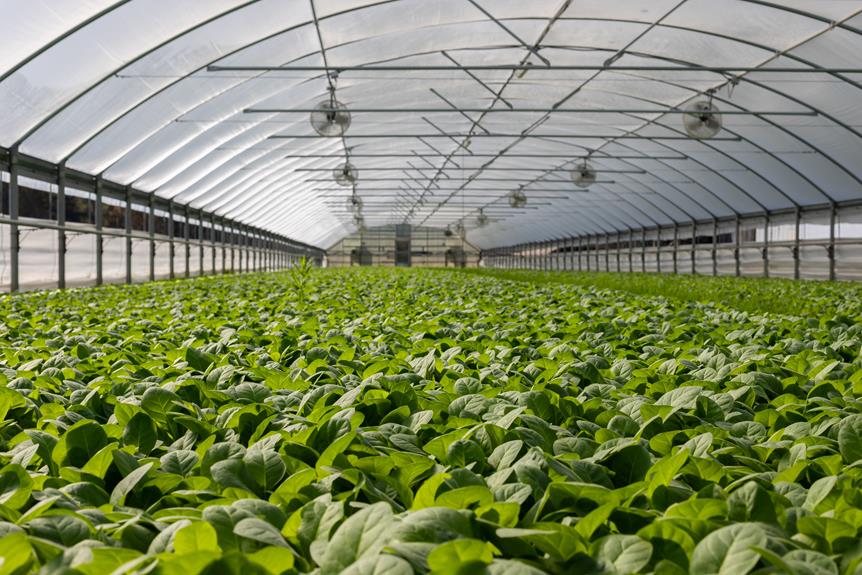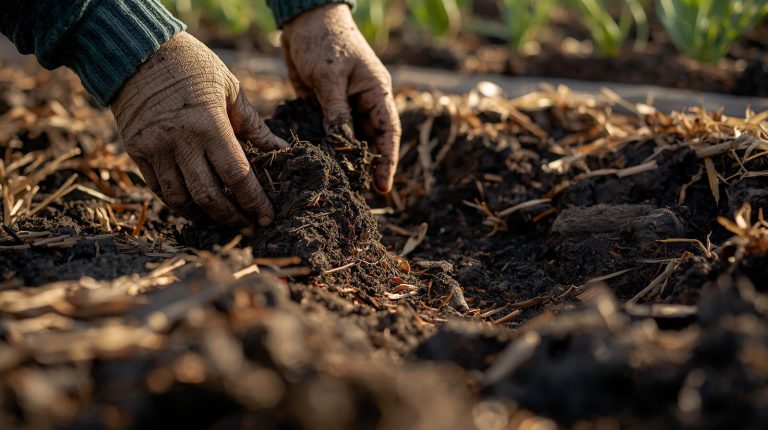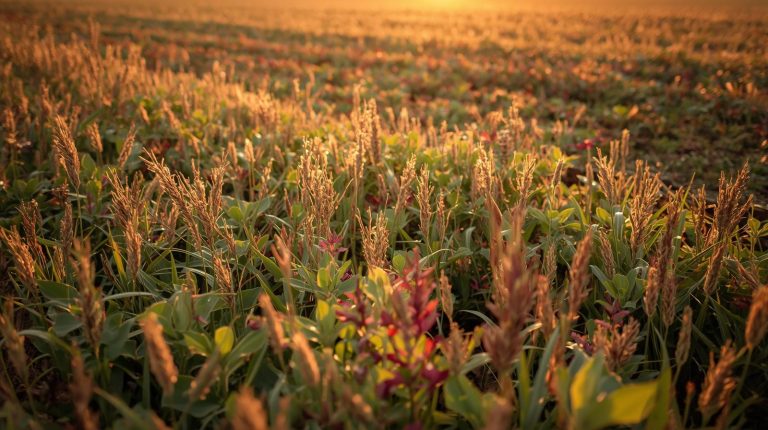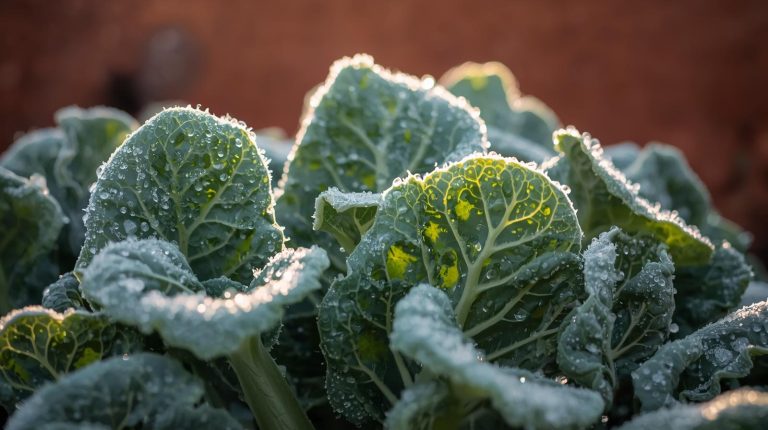Looking to bring some greenery into your home? Indoor plants are the answer! They not only boost your mood but also improve air quality, making them essential for any interior design. But where do you start? How do you ensure your indoor plants thrive? Don’t worry! In this article, we’ll guide you on how to grow indoor plants the easy way.
From lighting requirements to proper watering techniques, we’ll provide expert advice and useful tips to help you create a green oasis in your home. Get ready to belong to the plant-loving community!
Choosing Suitable Indoor Plants
To choose the right indoor plants, consider your lighting and space requirements.
When selecting the best indoor plant for your home, it’s important to take into account the amount of light available in the designated area. Some plants require direct sunlight, while others thrive in low-light conditions.
Additionally, consider the space available for the plants to grow. Some plants can become quite large and may not be suitable for smaller spaces.
If you’re looking for air purifying plants for indoor use, consider options such as snake plants or peace lilies. These plants have the ability to remove toxins from the air, promoting a healthier indoor environment.
For those new to indoor gardening, it’s recommended to start with easy-to-grow plants such as pothos or succulents. These plants require minimal care and are more forgiving for beginners.
Lastly, consider the aesthetic appeal of the plants. Choose plants that complement your interior design and create a welcoming atmosphere.
Whether you’re looking for air purifying plants, the easiest plants to grow, or decorating plants for your indoor space, selecting the right indoor plants will enhance the beauty and ambiance of your home.
Related Post: Designing Tomorrow: Great Innovations in a Sustainable Home.
Importance of Adequate Lighting
Maximize the growth of your indoor plants by ensuring they receive adequate light. The importance of light for growth can’t be overstated. Light is essential for photosynthesis, the process by which plants convert sunlight into energy. Without sufficient light, plants struggle to produce the necessary nutrients for growth and may become weak and leggy.
Different plants have varying light requirements, so it’s crucial to research the specific needs of your indoor plants. Succulents and cacti, for example, require continuous sunlight, while foliage plants typically need around 8 hours of light per day. If natural light is limited, you can use artificial lighting sources like grow lights to supplement.
Remember to avoid placing plants in direct sunlight to prevent leaf burn and to monitor the duration and intensity of light exposure to avoid overexposure.
Techniques for Proper Watering
How can you ensure proper watering techniques for your indoor plants?
Proper watering techniques are crucial for the health and growth of your indoor plants. Follow these guidelines to ensure that your plants receive the right amount of water:
- Water plants when the top inch of soil feels dry.
- Use room temperature water to prevent shocking the plants.
- Avoid overwatering by ensuring proper drainage.
- Adjust watering frequency based on the season and plant’s water requirements.
By following these proper watering techniques, you can prevent issues such as root rot and nutrient deficiencies, and promote healthy growth in your indoor plants.
Remember to monitor the moisture level of the soil using a moisture meter or by checking the soil’s texture. With the right watering practices, your indoor plants will thrive and contribute to a vibrant and inviting indoor environment.
Regulating Temperature and Humidity
Maintaining the right temperature and humidity is essential for the health and well-being of your indoor plants.
Indoor plants thrive in temperatures between 65-75°F (18-24°C), which is similar to the typical indoor temperature range. However, it’s important to avoid extreme temperature fluctuations and drafts, as they can negatively impact plant growth.
To ensure optimal humidity levels, use a humidifier or place a pebble tray filled with water near your plants. This will help increase humidity, especially in dry indoor environments.
Avoid placing plants near heating or cooling vents, as it can lead to rapid moisture loss and dry out the plants. Monitor humidity levels using a hygrometer and make adjustments as needed to provide a comfortable environment for your indoor plants.
Fertilizing Your Indoor Plants
To ensure the healthy growth and development of your indoor plants, it’s important to provide them with the necessary nutrients through regular fertilization. Indoor plants rely on you to supply them with essential nutrients since they can’t access them naturally like outdoor plants.
Here are some key points to consider when fertilizing your indoor plants:
- Choose a balanced liquid fertilizer that contains essential nutrients like nitrogen, phosphorus, and potassium.
- Follow the recommended dosage and frequency for fertilizing, as over-fertilizing can damage the plants.
- Apply the fertilizer during the growing season to support optimal growth and development.
- Monitor the plant’s response to the fertilizer and make adjustments accordingly to meet its specific nutrient needs.
Managing Plant Pests and Diseases
To effectively protect your indoor plants from pests and diseases, you need to be vigilant and proactive in their management. Regularly monitor your plants for signs of infestation, such as webs, holes in leaves, or sticky residue. Catching infestations early allows for more effective treatment.
Use natural remedies like neem oil or insecticidal soap to control pests, avoiding the use of harsh chemicals whenever possible. Maintaining a clean environment and practicing proper watering techniques can also help prevent infestations.
If a plant is heavily infested, it may be necessary to remove and dispose of it to prevent the spread of pests. By staying proactive and taking necessary precautions, you can ensure the health and vitality of your indoor plants.
Understanding Plant and Light Requirements
Understanding your indoor plants’ light needs is crucial for their growth and overall health. Proper lighting ensures that they can photosynthesize effectively and produce energy for their metabolic processes. Here are four important factors to consider regarding plant light needs:
- Intensity: Different plants have different light intensity requirements. Some plants thrive in high light conditions, while others prefer low light. It’s important to match the light intensity to the specific needs of your plants.
- Duration: The duration of light exposure is equally important. Most indoor plants require around 8 to 12 hours of light per day for optimal growth. Make sure to provide them with the appropriate duration of light exposure.
- Quality: Natural sunlight is considered the best quality light for plants. However, if natural light is limited, you can use artificial lighting sources like grow lights. These lights provide the necessary spectrum of light for plant growth.
- Placement: Place your plants near windows where they can receive maximum natural light. However, be cautious of placing them in direct sunlight as it can lead to leaf burn. Monitor the duration and intensity of light exposure to avoid overexposure.
Understanding and meeting your indoor plants’ light needs will ensure healthy growth and vibrant foliage.
Characteristics of Healthy Indoor Plants
Look for specific traits to identify healthy indoor plants.
When selecting indoor plants, it’s important to look for certain characteristics that indicate their overall health and well-being. A good root system is essential, with healthy roots being thick and light in color. Additionally, the foliage should be thick enough to prevent transparency.
It’s crucial to check for signs of disease or pests, such as white dots or sticky residue. Opting for plants with low light requirements can also be beneficial.
Examples of healthy indoor plants include philodendron, pothos, dracaena, and peace lily. By identifying these traits, you can ensure that you’re bringing home healthy indoor plants that will thrive in your space and provide you with the benefits of indoor gardening.
Solutions for Common Indoor Plant Issues
When encountering common indoor plant problems, it’s important to promptly address them to ensure the health and vitality of your plants. Here are some tips to help you address these issues effectively:
Pest Control
Monitor your plants regularly for signs of pests, such as webs, holes in leaves, or sticky residue. Use natural remedies like neem oil or insecticidal soap to control pests. Catch infestations early to prevent spreading and dispose of heavily infested plants.
Disease Management
Prune plants to remove dead or diseased parts and provide proper air circulation to prevent fungal growth. Research and apply appropriate treatments for specific plant issues.
Watering Issues
Check the soil moisture using a soil probe or moisture meter and adjust watering accordingly. Avoid overwatering by ensuring proper drainage and monitor the plant’s response to water.
Nutrient Imbalances
Use a balanced liquid fertilizer to provide essential nutrients and follow the recommended dosage and frequency. Avoid over-fertilizing, as it can damage the plants. Monitor the plant’s response to fertilizer and adjust accordingly.
Maximizing Indoor Plant Benefits
To make the most of your indoor plants and fully enjoy their benefits, it’s important to incorporate them into your daily life and create a nurturing environment.
Indoor plants offer numerous advantages, such as improving air quality, enhancing mood and well-being, increasing productivity, and providing a natural aesthetic.
To maximize these benefits, place your plants strategically in areas where you spend the most time, such as your workspace or living room. You can also create a calming atmosphere by adding plants with soothing scents, like lavender or jasmine.
Additionally, regularly caring for your indoor plants, including watering, fertilizing, and pruning, will ensure their health and longevity.
Conclusion
Growing indoor plants successfully requires understanding their specific needs and providing adequate lighting, proper watering techniques, and maintaining the right temperature and humidity.
Did you know that having just one indoor plant in a 10 square meter room can increase the air quality by 25%? So, by incorporating indoor plants into your home, you not only create a green oasis but also improve the overall air quality, making it a healthier and more pleasant environment to live in.




